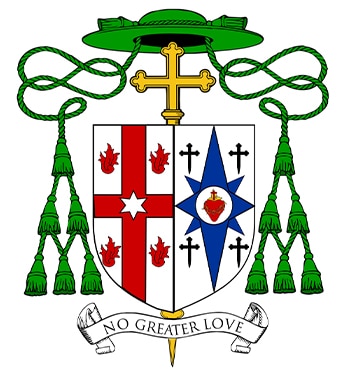D-Day’s Enduring Memory: Heroic Chaplains Remembered on 75th Anniversary

Tens of thousands of Allied forces stormed the beaches of Normandy.
June 6, 1944 — D-Day was underway.
That day 75 years ago launched the major turning point in World War II.
As more than 156,000 soldiers took part in the Normandy landings, chaplains also landed or parachuted with them. To commemorate the anniversary, the Register remembers three clergymen whose extraordinary courage should never be forgotten.
Father Francis Sampson, the “Parachute Padre” who served in the 501st parachute regiment, was among the 15,500 soldiers who jumped behind enemy lines that fateful June 6. “Probably no chaplain, Catholic or otherwise, saw more of the horrors of the hedgerow campaign than Francis Sampson,” related Jesuit Father Donald Crosby in his book Battlefield Chaplains: Catholic Priests in World War II (University Press of Kansas, 1994).
Right away Father Sampson began tending to the wounded and dying, both spiritually and physically, but German SS troops captured him and marched him down the road to shoot him, recount both Father Crosby and Lawrence Grayson in an online article titled, “A Padre in Jump Boots.”
Father Sampson would say he was so nervous he kept praying the “grace before meals” instead of the Act of Contrition. Next, the Germans stood him against a wall and raised their guns to shoot him, when a German officer spotted his chaplain’s insignia. The officer fired over the troops’ heads to stop them. Father Sampson identified himself to the officer as a Catholic priest. In response, the officer saluted, bowed slightly and showed him a Catholic medal pinned inside his uniform and insisted Father Sampson see pictures of his baby.
“The German officer, who had clearly saved his life, promised him that a German doctor would come by in a day or two and tend to the wounds of the American soldiers,” said Father Crosby.
In the meantime, Father Sampson not only saved the American soldiers, but gave his own blood to a wounded soldier and continued working with no rest. He was awarded the Distinguished Service Cross (DSC) for his heroism at Normandy.
After D-Day, Father Sampson would be recaptured by German troops during the Battle of the Bulge and, as a prisoner in a stalag until the end of the war, he remained committed to helping the sick and saying Mass. He went on to become the U.S. Army’s chief of chaplains from 1967 to 1971. The 1998 movie Saving Private Ryan was based on one of Father Sampson’s missions connected with D-Day.
“The Chaplain Corps, per capita, were the most highly decorated of all the branches of the army,” observed Lyle Dorsett, author of Serving God and Country: United States Military Chaplains in World War II (Berkley Books, 2012), upon D-Day’s 70th anniversary five years ago for the Register. “It means you’ve got guys on the front, giving and risking their lives so that others can be ministered to.”








